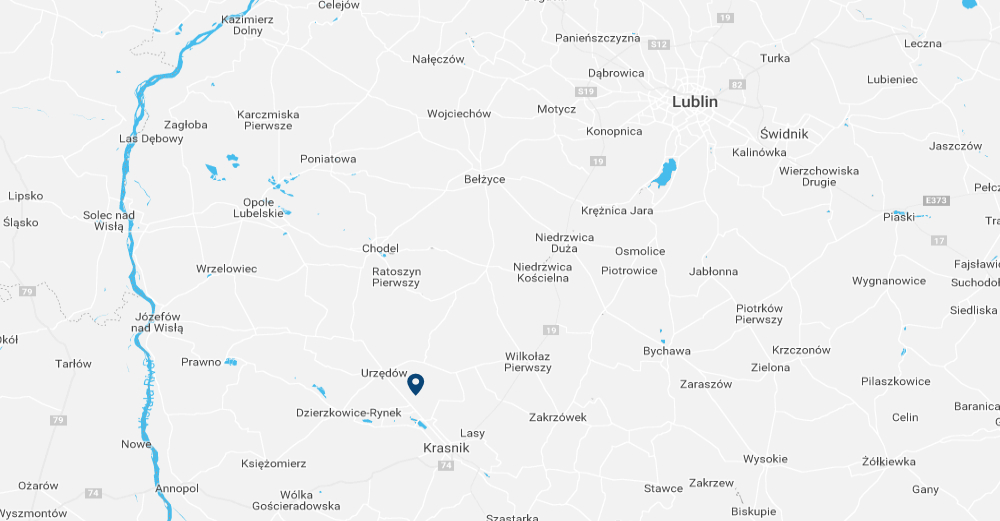Limiting speed at which rolling bearing can work is restricted by many different factors. In the vast majority of cases crucial restriction is working temperature of bearing which depends on the amount of heat generated in the bearing and the efficiency of its extraction to environment. Increasing temperature decreases viscosity of lubricant and weakens lubricating film. Due to thermal expansion it also decreases operational clearance of bearing. Bad lubrication intensifies friction which causes additional temperature rise. After exceeding certain speed those phenomena sums up and cause a „snowball effect” which leads to scoring or bearing blockage. In case of some types of bearings and their use in particular solutions the factors which have greatest influence on limiting speed might be different, for example: cage strength, centrifugal and gyratory forces connected with rolling elements movement, and in case of capped bearings the properties of sealing.
In further parts of this publication the ngr. limiting speeds for particular bearing types have been presented in relevant charts.
Limiting speed is the maximum speed that a standard type bearings with standard accuracy class can achieve taking into consideration the following assumptions:
- Professional bearing mounting: recommended fitting and geometric accuracy of bearing placement, good stiffness of shaft and housing, proper operational clearance of bearing, effective sealing (protection from contamination).
- Outer ring is rotating, inner ring is stationary.
- Normal conditions for heat extraction from the bearing and lack of additional heat sources nearby.
- Proper lubrication – good quality lubricant with optimal viscosity:
- appropriate grease for high speed bearings - max. grease fill 30%;
- oil – oil bath, oil level up to axis of the lowest placed rolling element.
- Moderate load – max. 0.08 of dynamic load rating C:
- for radial bearings only radial load Fr or max. axial load Fa contribution not greater than 0,20 Fr,
- for thrust bearings only axial load, taking into consideration that minimum load of min. 0,02 C is needed for proper work.
Limiting speeds presented in this publication have been elaborated basing on years of experience, gathered by multitude of testing and real life observations in operational conditions.
For bearings that can be lubricated both by oil and grease there are given two values due to the fact that usage of grease increases motion resistance and as a result decreases limiting speed. It is worth to mention that standard working condition of greased bearing stabilizes only after some period of worked hours, typically few, a dozen or so, sometimes even more. It is common to expect that in the initial period of work the temperature growth might be stronger and it is advised not to allow bearing to work with speeds close to limiting speed.
If the real working condition do not fill above mentioned requirements the allowable speed has to be set at a suitably lower point than limiting speed.
Allowable speed of radial bearing working under load different than assumed before can be calculated using following formula:

where:
nd - allowable rotational speed of bearing in working conditions rev/min
fP – load amount coefficient according to Fig. 5
fa – axial load contribution coefficient acc. to Fig. 6
ngr – limiting speed of bearing acc. to appropriate chart from this publication rev/min
C – basic dynamic load rating [kN]
P – equivalent dynamic bearing load [kN]
Fr – bearing radial load [kN]
Fa – bearing axial load [kN]

If there occurs situations where bearing has to work with speeds greater than limiting speed it is necessary to implement special solutions. Possible solutions:
- Use of bearings with greater accuracy class and precise manufacturing of areas where bearings will be mounted.
- Using bearing of special design which have smaller internal friction (different internal design and cage material).
- Incorporating lubrication system that allows additional bearing cooling and/or feeding minimal necessary amount of oil e.g. circulating oil lubrication (with potential oil cooler), oil-mist lubrication.
- Using special lubricants.
- Special design solutions which allow very good heat distribution e.g. heat sink on a housing, air blower etc.
- Providing optimal operational clearance by bearing temperature distribution analysis and dimension changes caused by thermal expansion. Proper chose of initial clearance and fittings in the bearing mounting place.
The maximum increase of limiting speed that can be achieved by incorporating all above mentioned solution is equal to 2.5 x for ball bearings and 2 x for tapered roller and cylindrical roller bearings.






